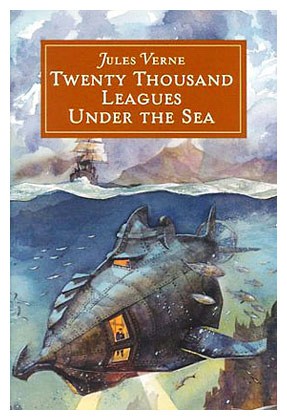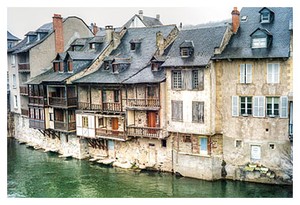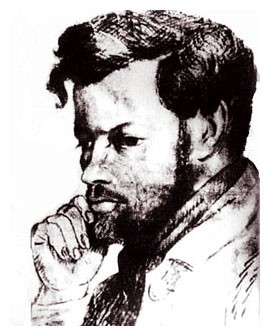Espalion, France, The Birthplace of Diving

- SUBSCRIBE
- ALREADY SUBSCRIBED?
BECOME A BONJOUR PARIS MEMBER
Gain full access to our collection of over 5,000 articles and bring the City of Light into your life. Just 60 USD per year.
Find out why you should become a member here.
Sign in
Fill in your credentials below.
 What does say the Captain Nemo in Twenty Thousand Leagues Under The Sea, a book written in 1870 by the famous Jules Verne?
What does say the Captain Nemo in Twenty Thousand Leagues Under The Sea, a book written in 1870 by the famous Jules Verne?
(…) “The man is not free. He is connected to the pump sending him air through a rubber hose, a true chain riveting him to the ground.” (…) When the Captain Nemo is on the deck, he says as well that the way to be free (…) “is to use the Rouquayrol-Denayrouze device.” (…)
Here it is! Jules Verne’s adventure novel Twenty Thousand Leagues Under The Sea got inspired by the invention made by two Aveyronnais — the diving suit per se — when he attended in 1867 the Universal Exhibition in Paris.
Now back in 1860, when the engineer Benoit Rouquayrol invented the compressed air regulator when working for the Decazeville’s coal mines in Aveyron. The device was originally designed to rescue wounded in coal mines, allowing the rescuers not to suffer themselves from firedamp.
Thus Benoit Rouquayrol, an Espalion native, invented the principle of the modern autonomous diving. Then he got joined by another Espalion native, Auguste Denayrouze, a French Navy Lieutenant, whose dreams encompassed applying this discovery to the sea.
In 1864, they modified the hose membrane and the device itself, then it would resist under the high pressure found in an underwater environment. Thus was born the first ever diving apparel with a pressure tank, a regulator and a mouthpiece. First trials took place in the waters of the Lot river, close by the Pont-Vieux in Espalion.
Furthermore this scuba diving device got mass produced in the Paris region under the name of Aerophore. European and American navies adopted it and used it during the 19th and 20th Century, along with many hydraulic works companies, as well as fisheries specialized in fishing coral and coral sponges. The original system was designed in such a way the diver would carry a canister with compressed air on his back. A demand regulator was working with a membrane and attached to it. With the compressor air was brought to the container and not to the helmet. The air went through a hose to the helmet. The regulator was capable of levelling the air pressure in the lungs to the pressure of the surrounding water. The diver was able to disconnect the air hose and walk around for some minutes.
The system, even though highly featured in Jules Verne’s book and largely used with modifications, never got extremely popular possibly because of the large foot weights that had to be carried.
Auguste Denayrouze, another Aveyron native
Likewise Rouquayrol and Denayrouze, Aronnax — a character of the book Twenty Thousand Leagues Under The Sea — is a scholar. Captain Nemo was his scuba diving’s mentor, and he went on discovering the underwater forest of the (fictitious) island Crespo. When he describes his impressions in the book, Aronnax states: “It is like wearing an armour both flexible and resistant“. Furthermore he describes it using an analogy with the medieval armour; whereas the suits protects you from sea monsters, but mostly provides a good protection to the body where one can withstand the cold water as well as its high pressure.
Jules Verne says in his book: “The jacket’s fabric was maintained by strips of copper armouring the chest, defending it from the water’s thrust, thus leaving the lungs freely functioning.” (…) “When reaching 300 feet, I still was able to perceive the sun’s rays nonetheless weakly though.” (…)
As of today, divers are going to much superior depths thanks to the use of a breathing mixture with helium. The first divers had only an autonomy range of fifteen minutes per ten metres deep!
Add this unique French experience to your bucket list!
Experience (my) France is a small tour organization, the only known offering very special guided and hosted French immersions. The 10-day tours are guided and hosted by Véronique. She’s ready to take you on an off-the-beaten path tour of France’s hidden gem, Aveyron, located south west of France.
From June to September inclusive, each experiential tour is customized, allowing you to live at a slow pace, share your experience with like-minded travellers, and live like a local in a region where food, wine and culture are part of daily lives.
If you’re not drawn to large organized group tours, the idea of travelling with a maximum of 7 people is very appealing. It allows for flexibility and down-time in the itinerary, which is a must for an experiential tour. Another amazing thing about this experience is how few other tourists you will ever see—and no tour buses!
More in French tourism, jules verne





